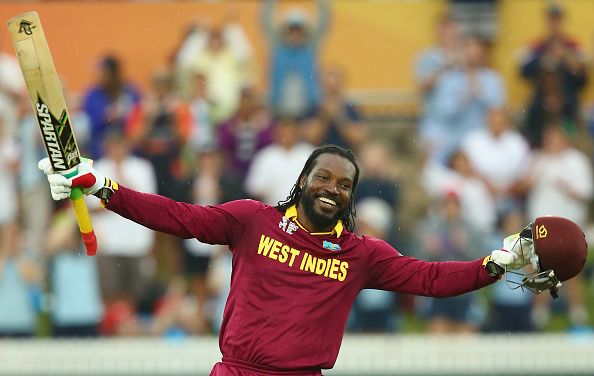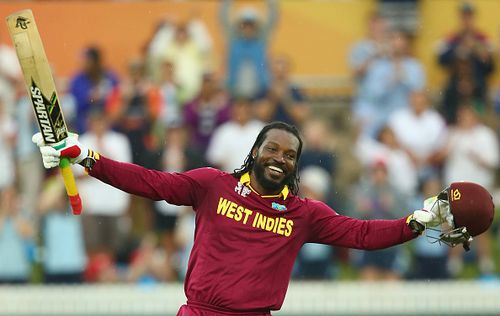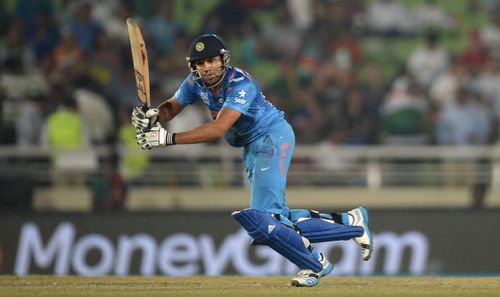
The double ton fashion - Why is there no glory in the 200s scored in ODIs these days?

The past half decade has seen batsmanship conquer new highs and soar into vistas which were previously tagged as “unattainable”. With just four fielders outside the circle, batting powerplays, the thick bats and the shrinking boundaries, the beautiful balance between the bat and ball is no longer present in this format. Cricket is no more a bowler's game (if it ever was once). Batting is becoming the hot pursuit for the kids and forthcoming players. The flat pitches have done nothing to improve the cause, either.
So naturally, it should not come as a shock to cricket followers that we have seen five double hundreds in ODIs over the last five years. Saeed Anwar’s 194 against India was the holy grail for more than a decade. As they say, the records are meant to be broken and now as we enter the modern day scenario of the Gentleman’s Game, there seems to be a flurry of double hundreds. It has become the Double ton fashion.
To be fair, there is hardly any bravery in the 200 run fiesta. Yes it is good for the ratings and the X-factor. But speaking for more deeper perspective of batsmanship, there is hardly any glory apart from the statistical one. I will present some of the reasons which I believe will convince you that the double ton fashion which has taken the Cricketing World by storm may just a be a paradox.
Bowling attacks are no longer deadly
All these double hundreds have been made against very moderate bowling attacks. Gone are the days when we had the great fast bowlers or the mesmerizing spinners foxing and deceiving the best batsmen. I don’t say that we can never duplicate the bowling standards that the game saw during the years gone by, but at the moment the bowling is a bit off-color. There is clearly a lack of “Bowling Brain” at the international scene. It can be agreed that international bowling standards have dipped significantly, and we can only watch the great bowlers of yore in highlights now.
An example, Rohit Sharma has scored his double hundreds against a sub-standard Australian attack (that didn’t have Mitchell Johnson) and a very moderate Sri Lankan attack (without Lasith Malinga and Rangana Herath). When it came to batting against the mighty Australians in the highly rated Border-Gavaskar trophy, Rohit let us know how easily he would crumble in a boiler room situation. Sometimes, it is not the strength in numbers but a gutsy hard fought fifty which will earn you lifelong fans.

Similarly, Chris Gayle was badly out of form and then he announced himself at the World Cup with a squash buckling 200 against a meek Zimbabwean outfit. When it mattered the most, Gayle failed to deliver the goods against quality bowling sides South Africa and India (Yes, We have been bowling well in this World Cup so far).
When the team needs you to occupy the crease and fight it out, the mentioned players have failed consistently in recent times.
On the hindsight, we can argue that Sachin’s double hundred did come against a quality South African attack but it came on a placid Gwalior track with absolutely nothing to offer. We have seen our batsmen struggle when they bat on lively tracks. We will be glad if our players could score a century there than on a lifeless sub continental track.
Conditions in India are too batting friendly
Secondly, four of the five double hundreds have been scored by Indians and not surprisingly all of them have been on Indian pitches. Every Cricket fan knows how flat and batsmen friendly our pitches are. There is hardly any steep bounce or awkward swing movement to challenge the batsmen. Even if it does spin in an ODI, it does so very slowly. The boundary sizes are very small and the mis-hits too sail over the boundary for a SIX.
Moreover, India has always been a tough opponent to beat at home even without the massive double hundreds. Nothing has been done to improve the quality of pitches and hence an ODI in India is a competition between the two batting units.
Thirdly, all the double hundreds have come in the first innings of the ODI. While the pressure is on in both innings of the game, the batsmen generally tend to feel more comfortable when they are asked to set a target rather than chase a mammoth total. Pacing your innings when you are chasing a gigantic score is the litmus test of a batsmen’s ability. Sadly none of the double hundreds have come in a chasing cause.
Now with 350+ totals being scored more frequently than ever, there is a realistic chance of scoring a double ton. Of course, the batsman will need his due share of luck, but fortune tends to favour the brave. Let us see if we can see this feat being achieved in the future. Until then, Herschelle Gibbs’s 175 or Virat Kohli’s 183 will remain as some of the best knocks in ODIs in a chasing scenario.
Statistics don’t tell the whole story
I agree that we as humans tend to be captivated by the spell of numbers and spend our lives searching for statistical glory. I don’t deny that the double centuries in ODIs have been marvellous achievements in the field of Cricket. But as I said, if we shed the stereotype and look beyond numbers, then we can agree that these innings are still not of the highest quality compared to some of the brave cameos, brilliant fifties, the hard fought centuries by players on foreign soils against quality attacks.
I feel that we would be seeing more double hundreds in the future and let us hope for once it is scored against a quality attack on a lively wicket and hopefully in a chase (that will just be the icing on the cake). Until then, I don’t feel we have much to read into the double tons scored by these batsmen.